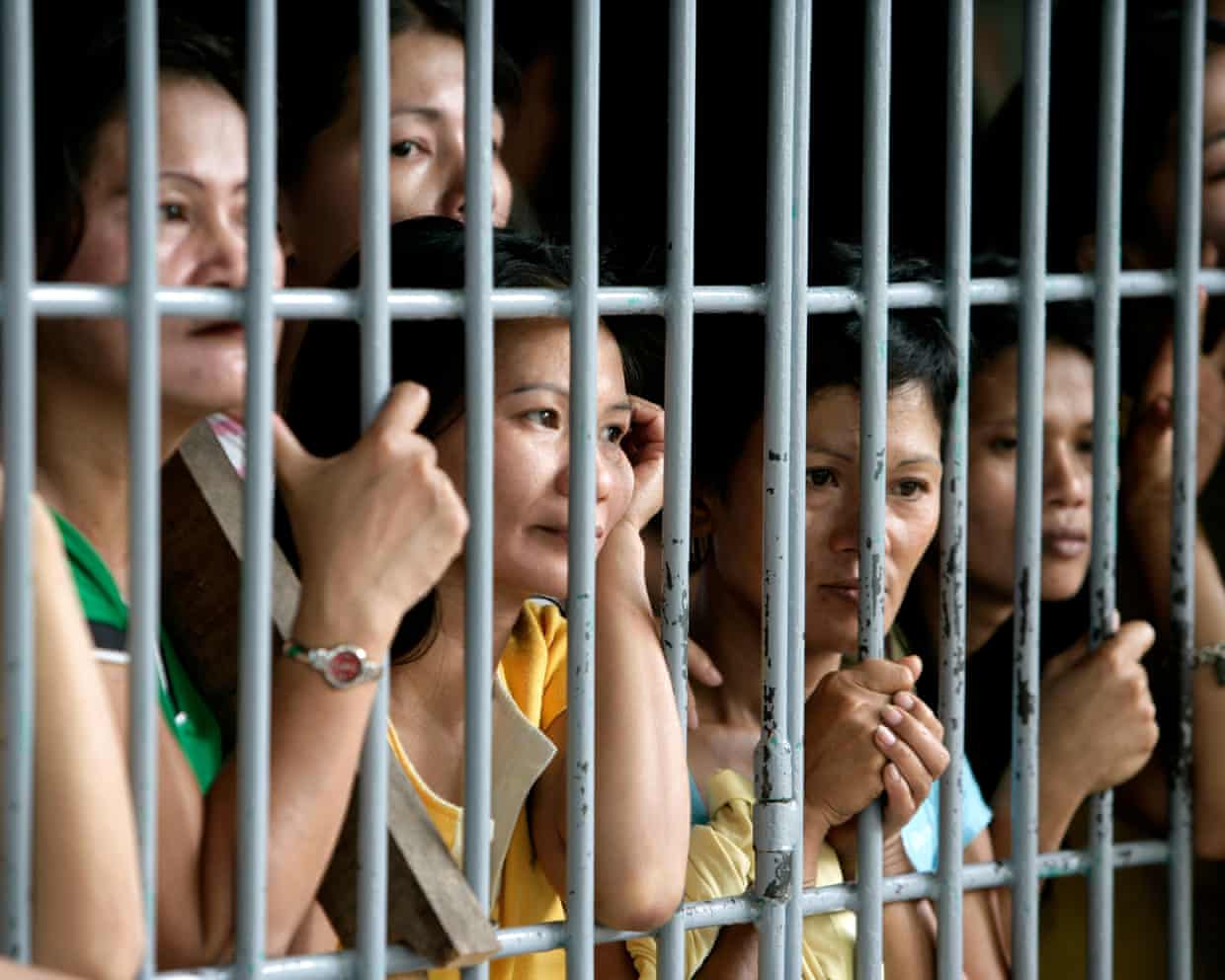Health
Global Crisis Emerges as Women in Prison Near One Million

The number of women incarcerated worldwide is approaching one million, with reports highlighting alarming conditions of sexual violence and forced labor in prisons. This situation underscores a growing global crisis, as the rate of female incarceration is rising at a significantly faster pace than that of men. According to data, the number of women imprisoned has surged by 57% since 2000, while the male prison population has increased by only 22% during the same period.
Olivia Rope, executive director at Penal Reform International, emphasized the urgency of the situation, stating, “We are facing a global crisis. If you look at the rate of growth compared to men in prison, it is really alarming.” Women often become an afterthought in the criminal justice system, facing harsh conditions where their specific needs remain largely unmet.
Reports from various countries, including El Salvador, Kenya, the United States, Argentina, and Iran, reveal instances of female prisoners enduring physical abuse, sexual violence, and coerced labor. Many women are incarcerated for minor offenses, such as petty theft or drug-related charges. In fact, the latest edition of the World Female Imprisonment List indicates that over 733,000 women and girls are currently imprisoned globally. Experts believe the actual figure may be higher due to unreliable data collection.
The United States leads the world with the highest number of incarcerated women, totaling 174,607. China follows with approximately 145,000, not including an unknown number in pre-trial or administrative detention. In England and Wales, there are 3,566 women in prison, representing just 4% of the overall prison population. Statistics reveal that 72% of these women were serving sentences for non-violent offenses as of 2020, according to the Prison Reform Trust.
Unique Challenges Faced by Incarcerated Women
Women in prison face challenges that are distinct from their male counterparts, often due to a history of abuse and mental health issues. The World Health Organization reports that suicide rates among incarcerated women in Europe are nine times higher than those in the general population. Unfortunately, mental health treatment remains inadequate in many countries, leaving vulnerable women without necessary support.
Sabrina Mahtani, a Zambian-British lawyer and member of Women Beyond Walls, advocates for a reevaluation of the justice system, stating, “I don’t think that prison works. It’s really harmful, and I think we need to radically rethink the way we do justice.” Mahtani points out that most incarcerated women do not pose a danger to society, suggesting alternative solutions to incarceration.
The impact of maternal incarceration is profound, with an estimated 1.45 million children worldwide having a mother in prison. Rope remarked, “When a mother goes to prison, the family usually falls apart and the children have to go to social services or other family. It’s a much bigger impact than a man going to prison.”
Conditions of Incarceration and Systemic Abuse
The conditions within prisons are often dire. Pregnant women frequently lack adequate medical care and may be forced to give birth alone. Reports indicate incidences of women being tied to hospital beds during labor and monitored by male guards. Sexual violence remains a pervasive issue, particularly in conflict-affected regions, where women may be exploited outside prison walls.
In India, for instance, female prisoners have been reported to be “supplied” to male inmates, with sexual abuse being alarmingly common. Furthermore, many women are compelled to work within prisons for minimal or no pay, raising concerns about the lack of regulation, especially when linked to the private sector. In Cambodia, women have been found working illegally to produce garments for export.
The challenge of obtaining accurate data on female incarceration continues to hinder efforts for reform. Helen Fair, a research fellow at the Institute for Criminal Policy Research, has noted that acquiring reliable statistics is exceedingly difficult. “The availability of prison population data generally is pretty thin, so there are big gaps,” she stated.
This escalating crisis calls for immediate attention and action at both national and international levels to address the systemic issues affecting women in prisons. Without comprehensive reform, the plight of these women—and the broader implications for their families and communities—will continue to worsen.
-

 Lifestyle4 months ago
Lifestyle4 months agoLibraries Challenge Rising E-Book Costs Amid Growing Demand
-

 Sports4 months ago
Sports4 months agoTyreek Hill Responds to Tua Tagovailoa’s Comments on Team Dynamics
-

 Sports4 months ago
Sports4 months agoLiverpool Secures Agreement to Sign Young Striker Will Wright
-

 Lifestyle4 months ago
Lifestyle4 months agoSave Your Split Tomatoes: Expert Tips for Gardeners
-

 Lifestyle4 months ago
Lifestyle4 months agoPrincess Beatrice’s Daughter Athena Joins Siblings at London Parade
-

 World4 months ago
World4 months agoWinter Storms Lash New South Wales with Snow, Flood Risks
-

 Science3 months ago
Science3 months agoSan Francisco Hosts Unique Contest to Identify “Performative Males”
-

 Science4 months ago
Science4 months agoTrump Administration Moves to Repeal Key Climate Regulation
-

 Business4 months ago
Business4 months agoSoFi Technologies Shares Slip 2% Following Insider Stock Sale
-

 Science4 months ago
Science4 months agoNew Tool Reveals Link Between Horse Coat Condition and Parasites
-

 Sports4 months ago
Sports4 months agoElon Musk Sculpture Travels From Utah to Yosemite National Park
-

 Science4 months ago
Science4 months agoNew Study Confirms Humans Transported Stonehenge Bluestones









